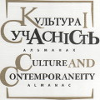ПРАЦЯ МАРТІНА ГАЙДЕГГЕРА «ДЖЕРЕЛО ХУДОЖНЬОГО ТВОРІННЯ» ЯК МЕТОДОЛОГІЯ РОЗУМІННЯ ТВОРЧОСТІ
Martin Heidegger’s Work «The Origin of the Work of Art» as Methodology for Understanding Creativity
Author(s): Valeriy Anatolyevich Sivers, Oksana BuhaiovaSubject(s): Aesthetics, Existentialism, Sociology of Art, History of Art
Published by: Національна академія керівних кадрів культури і мистецтв
Keywords: Art; creation; methodology; category «nothing»; Observer; truth; entity; substance; captured action; qualia; existential;
Summary/Abstract: The purpose of the article is to conceptually logicalise the procedurality of the creation act based on the analysis of M. Heidegger's work«The Origin of the Work of Art». The research methodology has primarily been based on the futurological or value-futurological method, which is the author's proposal of V. Sievers. It is only effective in the context of our research, unlike established historical, comparative, axiological, and phenomenological methods, since it is based on the idea of a coordinated approach to the perception of reality and the simultaneous movement of a person in it. Moreover, as follows from the very name, it is itself a direction and a criterion of movement in it. The scientific novelty of the study is that based on the analysis of M. Heidegger's work «The Origin of the Work of Art», the act of creation is divided into two stages: the vision of truth in the circle of «nothing» and the hypothetical phasing of acquisition based on the act of creation as a result of the status of a thing. An interpretation of one of the oldest problems in philosophy – the problem of «qualia» – is offered, and a new approach to understanding the category «existential» is also presented. Conclusions. The signs of a thing highlighted in Heidegger's text are a state of such fixation of a set of defined steps, which indicates the formation of creative conditions. In contrast to creation, the conditions of creativity should be understood and considered as the result of the gradual accumulation of groundless multiplication of creations that in the process of their interaction cause a historical movement in the sequence of two opposing components in unity: natural and social. The concept of mental serves as a boundary and a connecting link between them. In addition, existential or valuable experience is a field of reflection that forms historical forms of human mental and material activity organisation.
Journal: Культура і сучасність
- Issue Year: 2022
- Issue No: 2
- Page Range: 16-23
- Page Count: 8
- Language: Ukrainian

